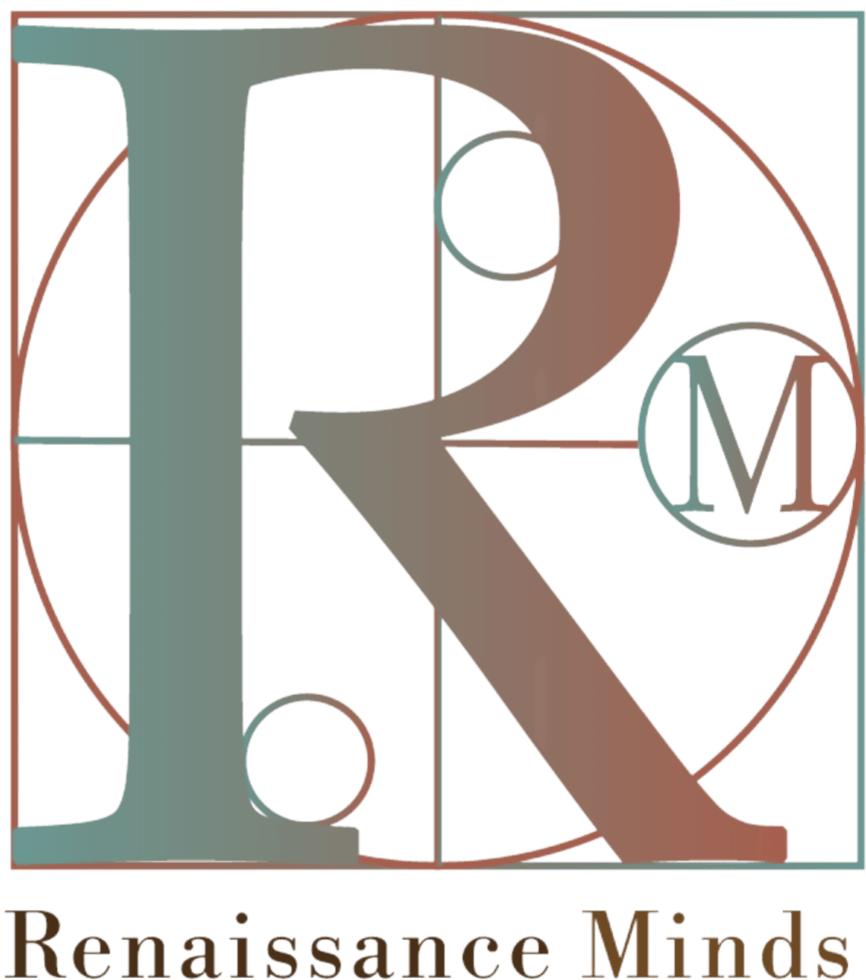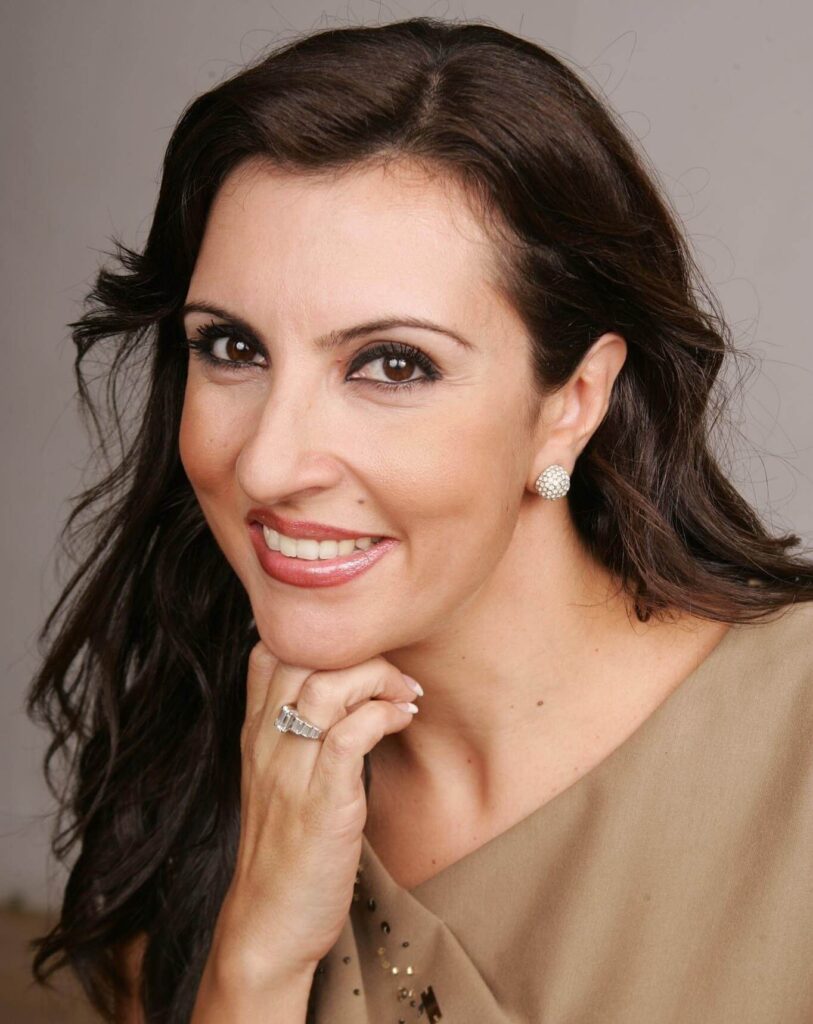(Featured image credit: @MASSIMO DI CAPUA)
Renaissance Minds
Caffé Florian
By: Silvia Davi
Venice is by far one of the most beautiful and unique cities on the planet. Its combination of rich history, arts, international events, and picturesque streets, with over 400 bridges on the lagoon, make it a truly magical destination. A legendary landmark in the heart of Piazza San Marco is Caffé Florian, a must visit location when in Venice that has mastered the art of dolce vita living. Renowned all over the world, with over three centuries of history and innovation, entering Caffè Florian is not a coffee break but the beginning of a unique lifestyle experience that has transcended through the years. Founded in 1720, it is known globally as the famed first coffeehouse!
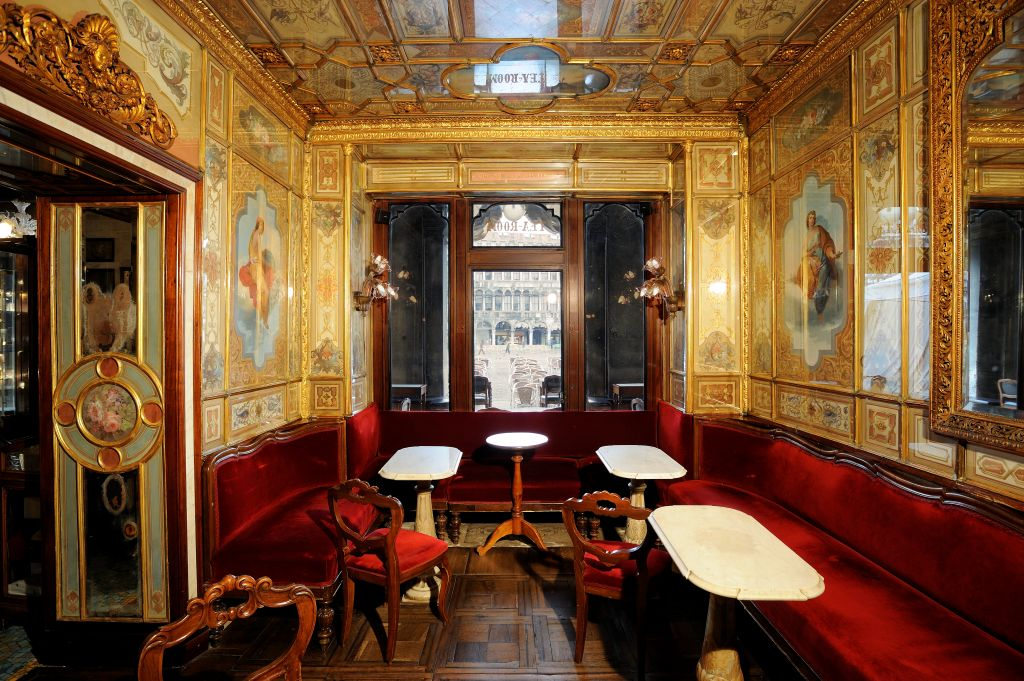
I make it a point to visit The Florian every time I visit Venice and it is always inspiring, exquisite, and exciting. During Carnevale season you feel transported back in time while having a cappuccino, lunch, or snacks among Carnevale goers wearing intricate costumes and masks. In the Spring and Summer, I love to sit at Caffé Florian’s magnificent outside area overlooking Saint Mark’s Cathedral to enjoy the square with an aperitivo while listening to the music of Vivaldi and other live classical tunes by Florian’s musicians. You cannot beat the atmosphere and engaging experience during every season. This Fall, I had the pleasure of discussing the early days and evolution of the Florian, while enjoying a delicious coppa di gelato with Cristiana Rivolta, head of sales & marketing for Caffé Florian.
1. The Florian is a historic and beautiful caffé in one of the most spectacular squares in the world. Describe its unique Venetian identity and mission.
Caffè Florian has been serving customers from Italy and around the globe in an elegant and truly distinguished atmosphere for more than 300 years. The service is always courteous and efficient, whether you choose to be in the inside halls, outside in the Piazza, or under the arches where the Orchestra can be heard playing in the background.

Taking a seat at the Caffé becomes a real experience, a luxury ritual in pure Florian style: waiters in livery and impeccable service strictly on silver trays. Two US economists, Joseph B. Pine and James H. Gilmore, wrote an interesting essay entitled “The Experience Economy”. In the introduction to the essay, they claim that the simple production of goods and services isn’t enough. The “experiences” offered to the guests really contribute to generating value; they wonder: “…What’s the difference between drinking a coffee in a bar of any station and drinking it at Caffè Florian? Well, the coffee at the station makes me face the day with energy, while the coffee at Florian’s takes me on a journey into history!
2. Describe Florian’s origins over 300 years ago and its title as the first caffé in the world.
Caffè Florian opened in St. Mark’s Square, where it still stands today, on December 29, 1720 under the name “Alla Venezia Trionfante”, or “Triumphant Venice”. In a short few months, Venetians began calling it “Florian’s” after the name of the Caffè’s founder, Floriano Francesconi. In 2020, the oldest coffeehouse in the history of coffee turned 300 years old and, in order to celebrate this memorable anniversary, in collaboration with the Ministry of Economic Development and Poste Italiane, on 3 December 2020, we issued a postage stamp dedicated to Caffè Florian and its tercentenary of activity.
Since its opening, Caffè Florian has always been frequented by an illustrious clientele. Venetian noblemen would sit side by side with ambassadors, merchants, fortune hunters, men of letters and artists, but also the ordinary citizens of La Serenissima. Such a varied assortment inevitably fired the imagination and creativity of such a perceptive observer of social manners as playwright Carlo Goldoni, who is said to have entered the Florian for the first time in 1721, when still a boy: he was a good friend of Floriano Francesconi and his character Mr. Ridolfo from the play “La bottega del caffè” (The coffeehouse) is a coffee owner based on Floriano’s personality and professional skills. Caffè Florian was also the hunting grounds of Casanova in search of female company, since the Florian was the only Caffè to admit women at the time.
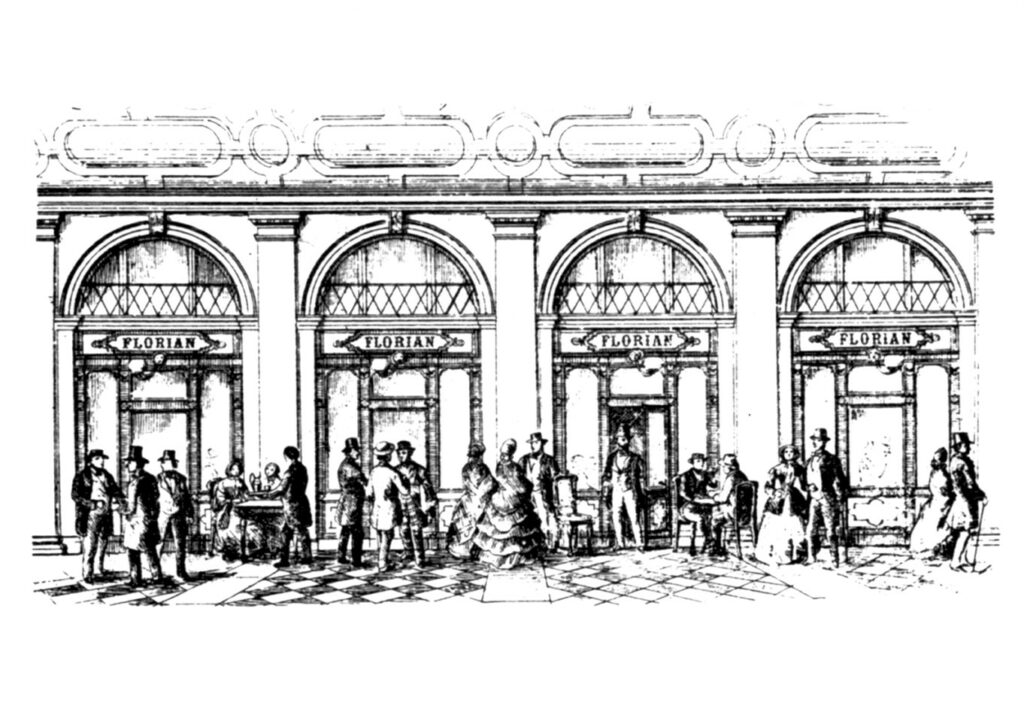
Today, the Caffè is still the place where Venice and the world meet. Comfortably seated in the magnificent halls, completely restored in the mid-nineteenth century, you can breathe the long and lively history of the city that unfolded outside the café’s stained-glass windows: the rise and fall of the Republic of Venice, conspirators plotting the end of the French and, later, Austrian rule – in fact, the wounded from the 1848 uprising were treated inside its rooms.
At the end of the 19th century Riccardo Selvatico and his friends would meet in the Sala del Senato (Senate Room) and discussed the idea of organizing a biennial art exhibition, the future Venice Biennale, as a homage to King Umberto and Queen Margherita of Italy. The first International Art Exhibition took place in 1895.The coffee house remained open and active even in times of war, continuing to serve as the ideal setting for a light meal, refreshments, and meeting with friends. Crossroads of whatever is new and interesting, from state affairs to local gossip and frivolous chat about the latest fashion, ever since its opening, Caffè Florian invites Venetians and visitors to immerse in its unique atmosphere. Even today, you may find yourself sitting in one of the coffeehouse rooms next to stage or screen stars, or personalities from the world of art, culture, politics, and business.
3. Each room in The Florian has a regal elegance and exquisite decor, can you please tell us about the rooms?
The Caffè’s architectural history is fascinating. In the beginning, there were only two simply furnished rooms. Towards the middle of the seventeen hundreds the Florian grew to include two new rooms. As the century came to a close, ownership passed to Valentino Francesconi, the founder’s grandson.
The Caffè Florian we know today did not arrive to us without its share of controversy. When, in 1858, Lodovico Cadorin of the Academia di Belle Arti, was commissioned to restore and redecorate the Caffè, there was a public outcry. Clients lamented that it would no longer be the same Florian and critics protested against the lavish sums (“Enough to build a palace on the Grand Canal!”) that would be needed in order to complete the project.
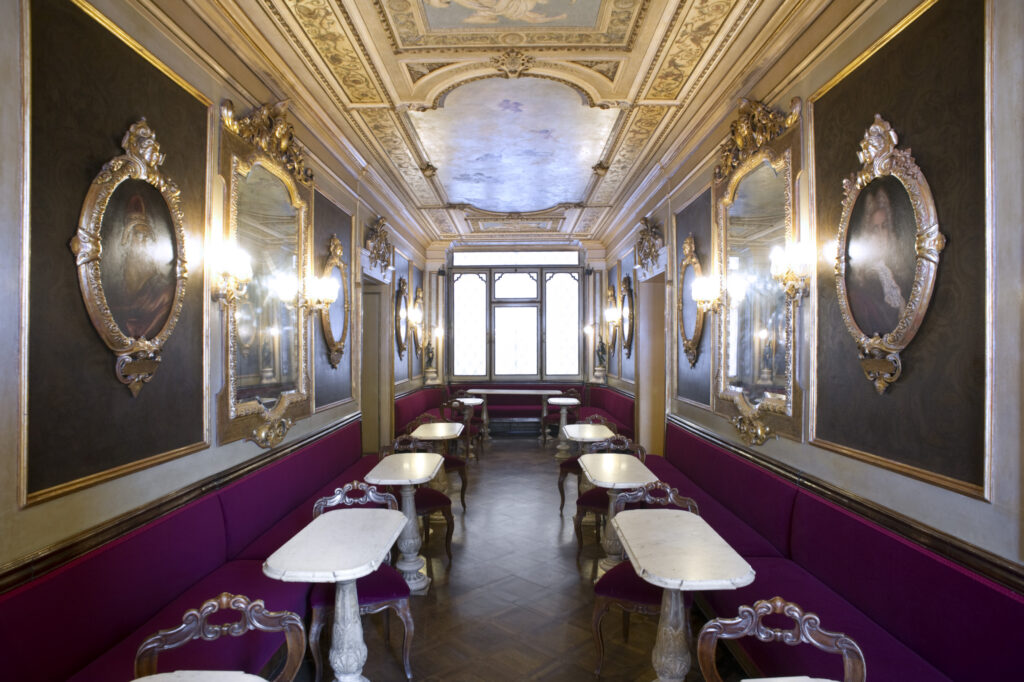
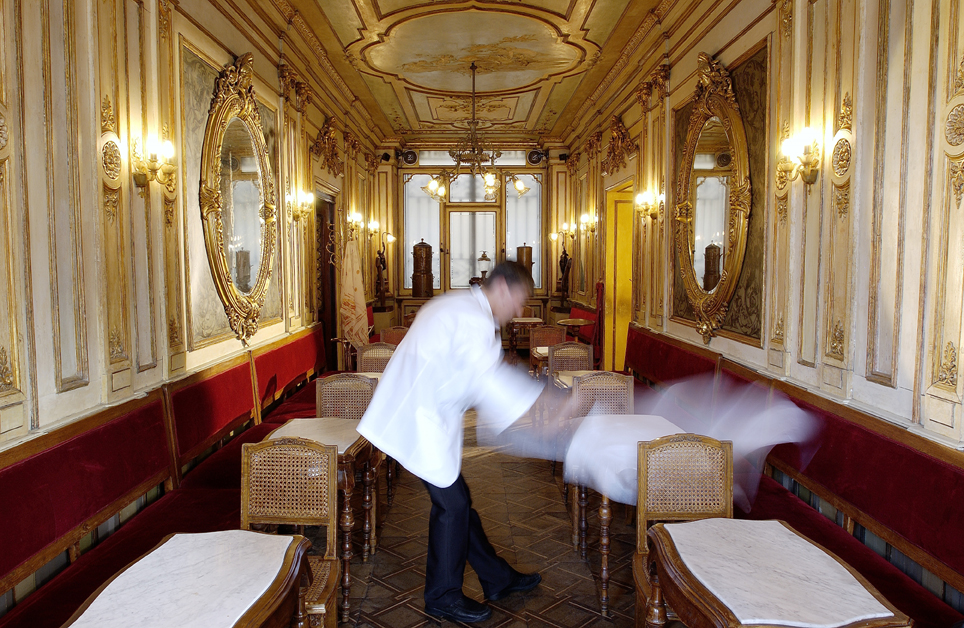
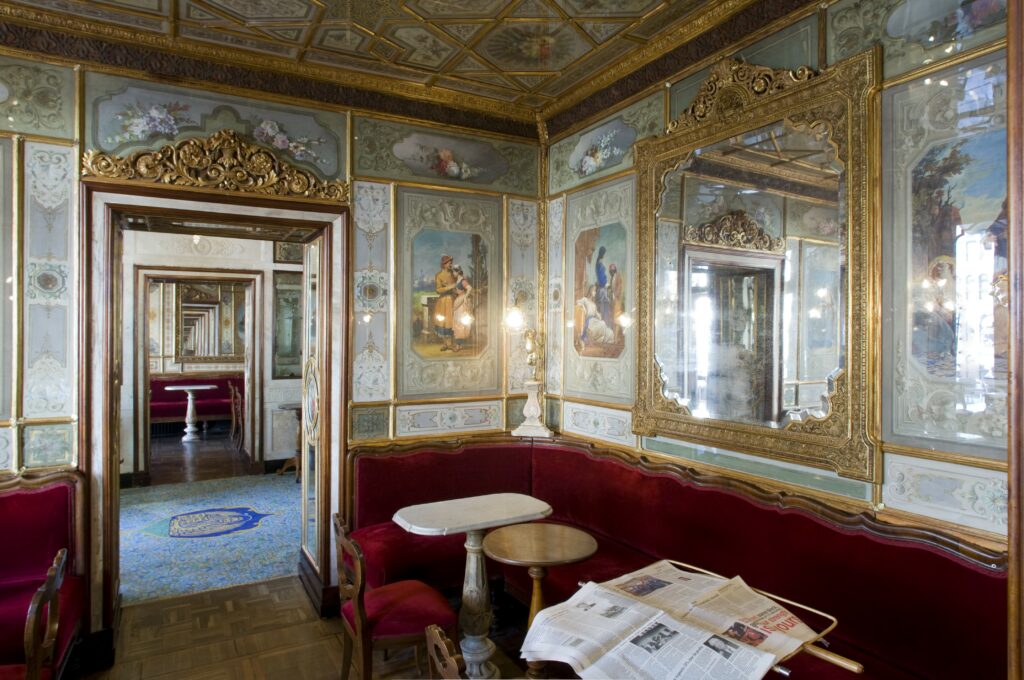
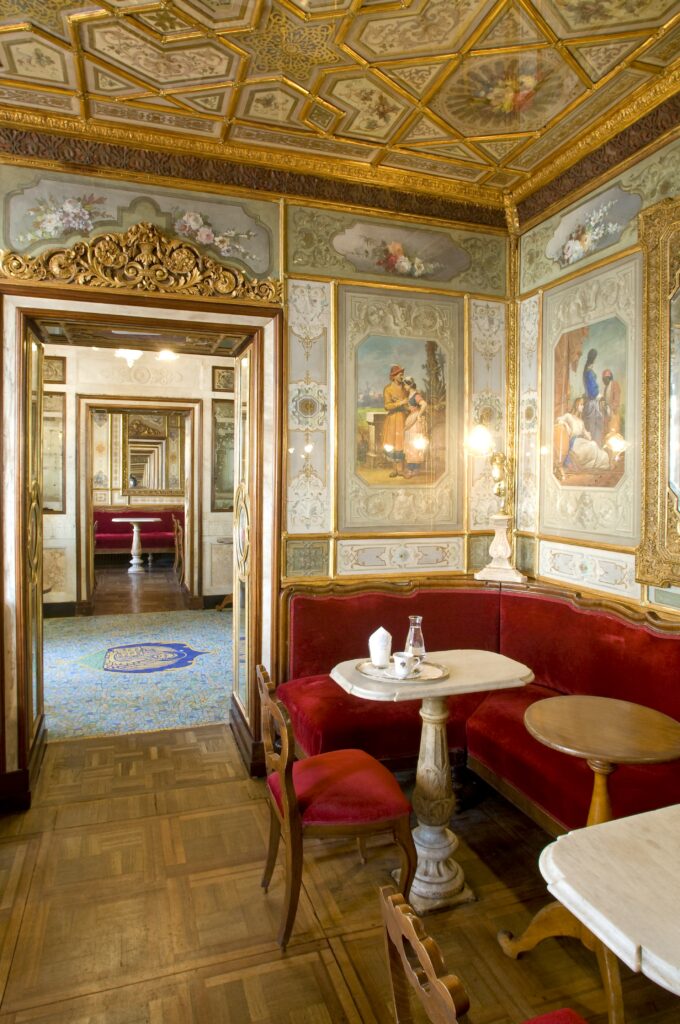
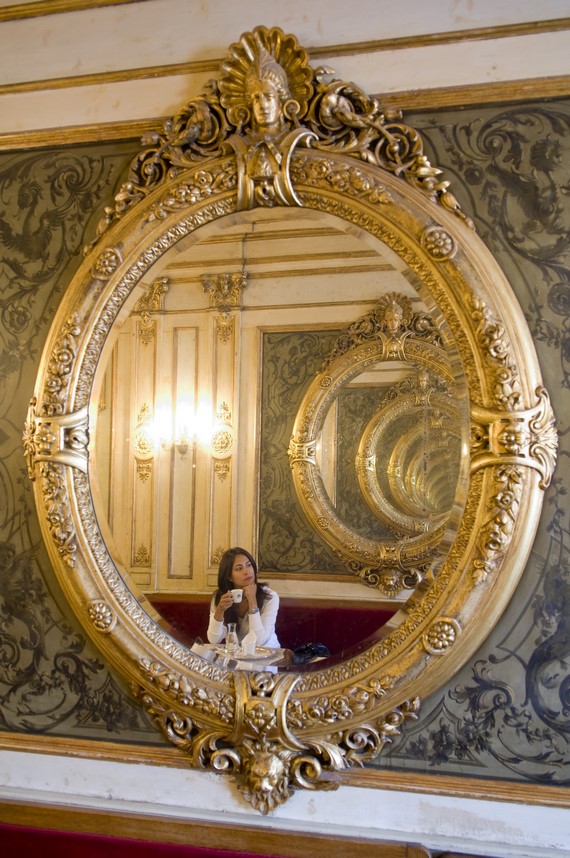
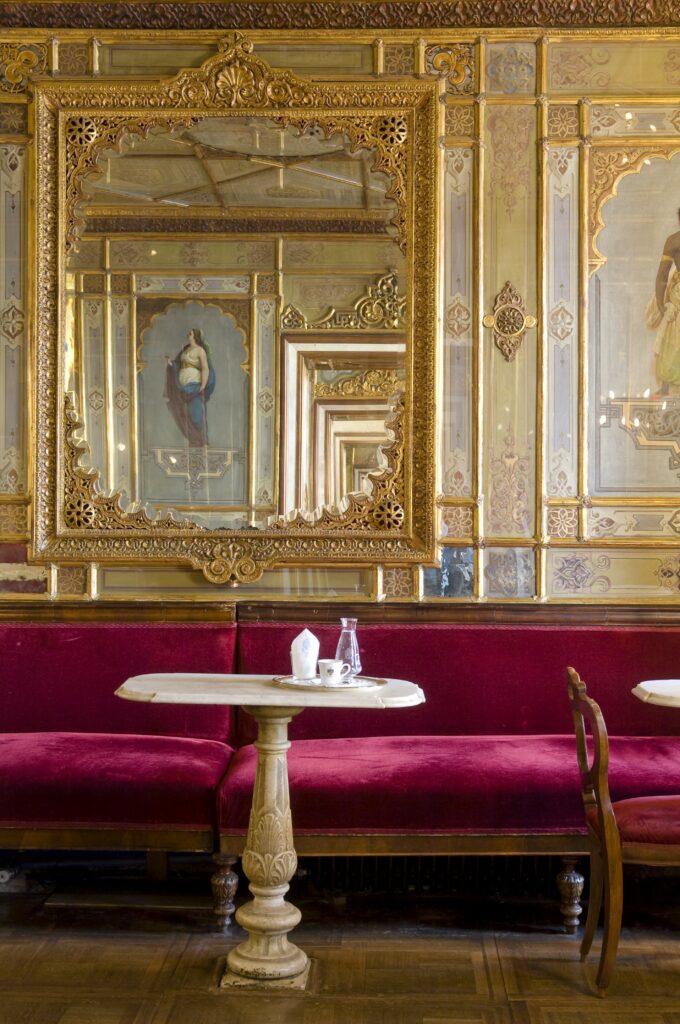
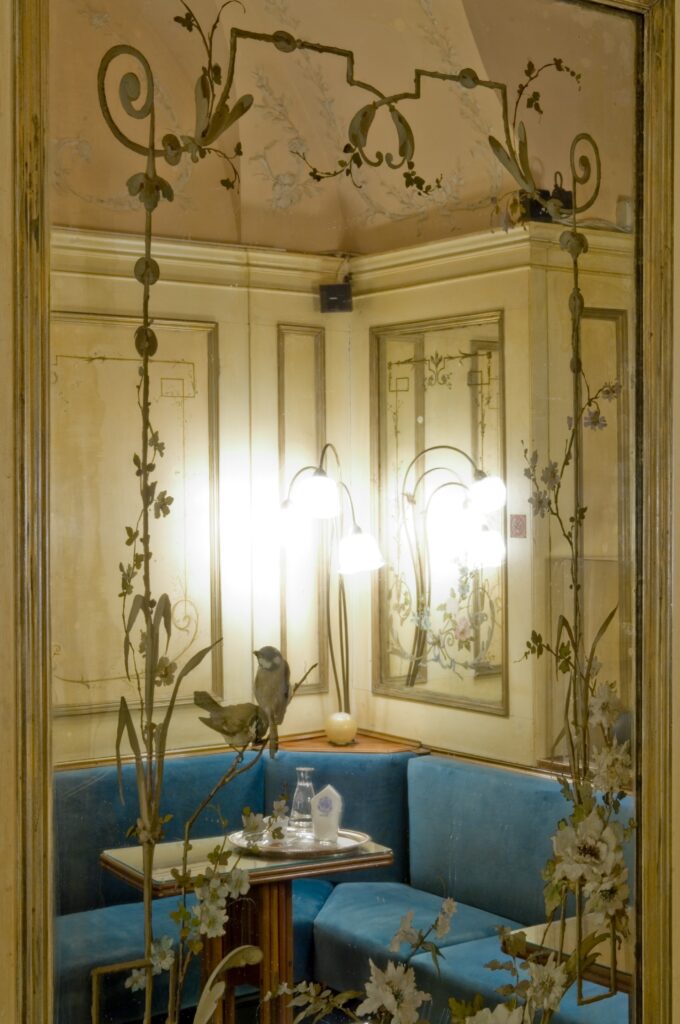
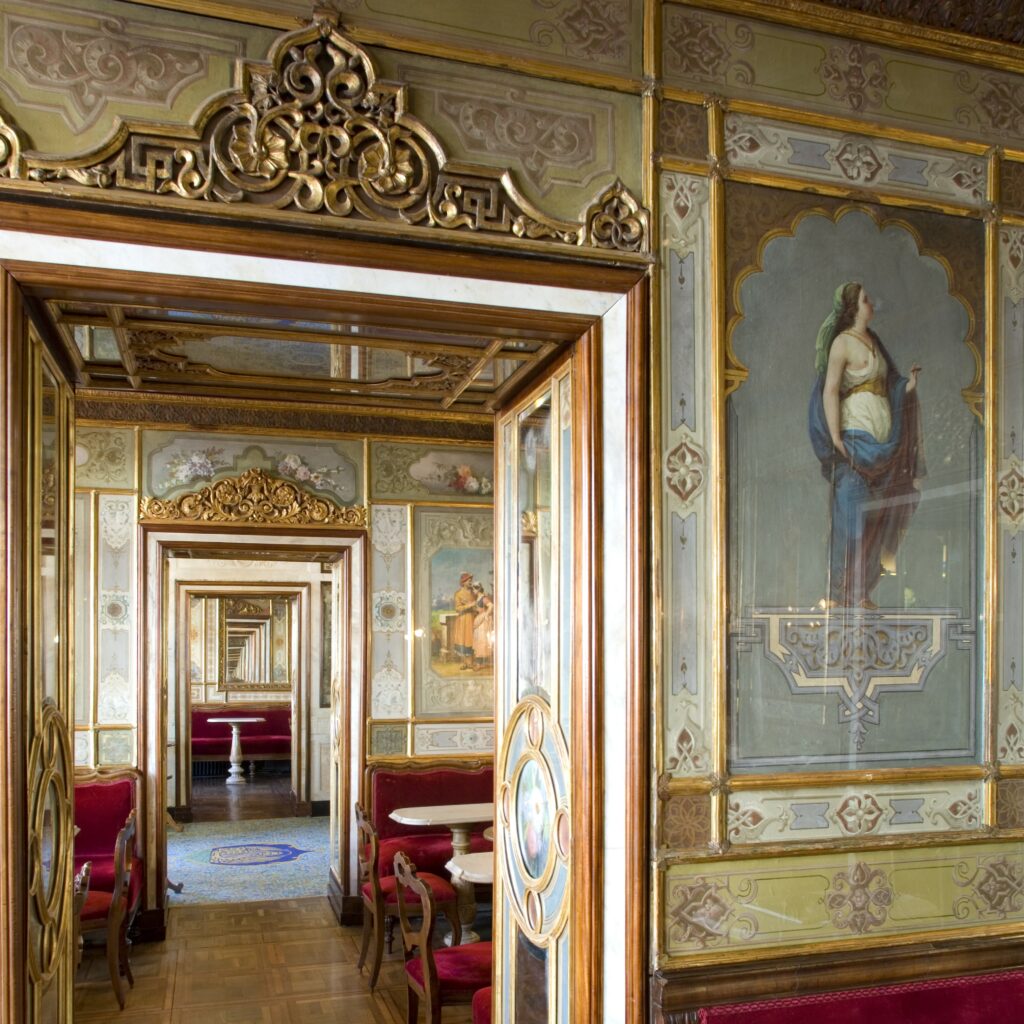
However, the owners held fast to their idea of rewarding the grand old Caffè with the magnificent rooms it deserved, and those rooms that had already seen so much were given a new façade, and thus, re-baptized with new names by the clientele. From then on, one of the Caffè’s rooms became known as the Sala degli Uomini Illustri (Room of the Illustrious Men), after the prominent Venetian figures portrayed in the medallion oil paintings by Carlini: Carlo Goldoni, Morosini, Titian, Marco Polo, Orseolo, Palladio, Marcello and Dandolo. Another room, Sala delle Stagioni o degli Specchi (Room of Seasons or of Mirrors) was decorated by Porta. Time-honored regulars of the Florian still call this long, narrow room “Il Ristorante”, or “The Restaurant”, as it served as the Caffè’s dining room in the nineteen thirties. The Sala Orientale (Oriental Room) and the Sala Cinese (Chinese Room) are adorned with oriental motifs while the Sala del Senato (Senate Room), the famous birthplace of the Venice Biennale, features elements from the worlds of arts and sciences, optimistic images of all the coming century would bring. The Sala Liberty (Liberty Room) is elegantly decorated with an arched vault, wood wainscotting and original hand-painted mirrors dating from the early 1900s.
4. During the Carnevale season, The Florian comes alive with people that fill the caffé dressed in costume. Tell us about this holiday at The Florian.
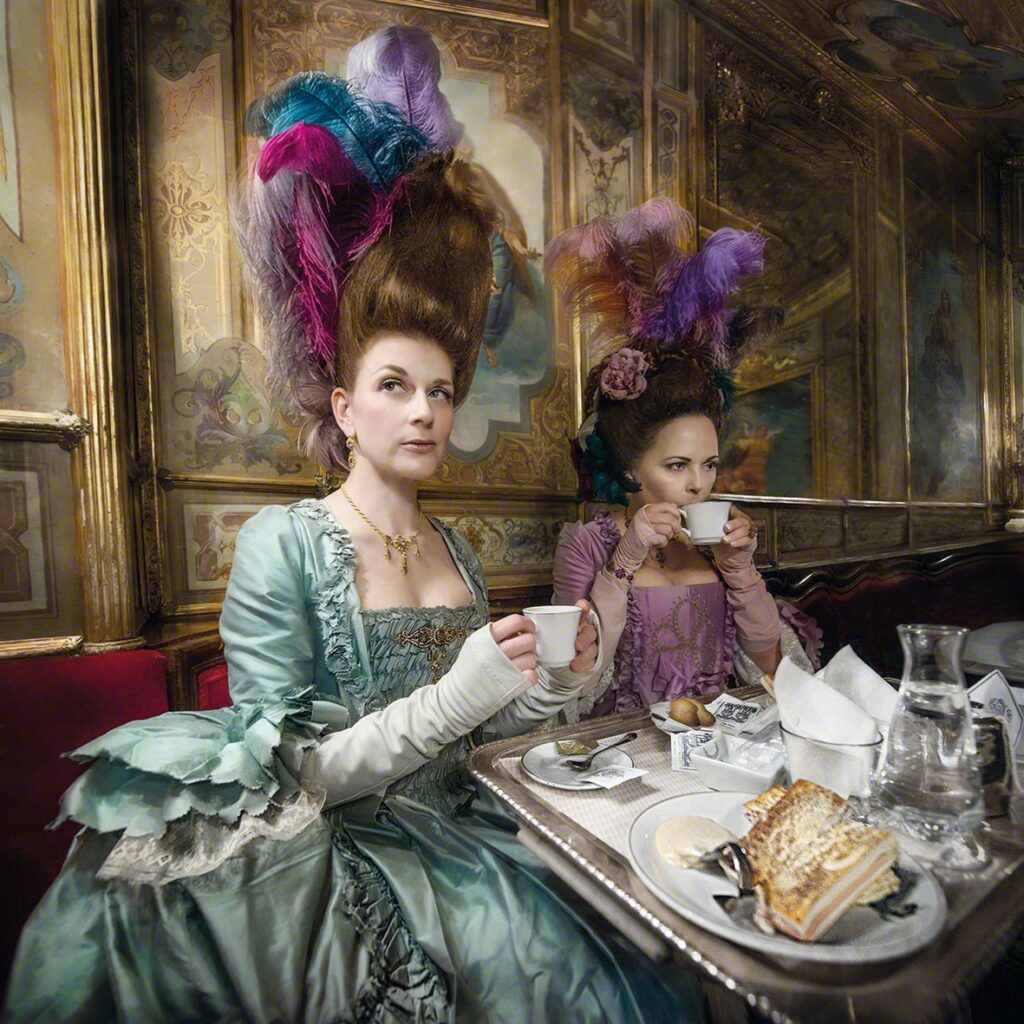
@MASSIMO DI CAPUA
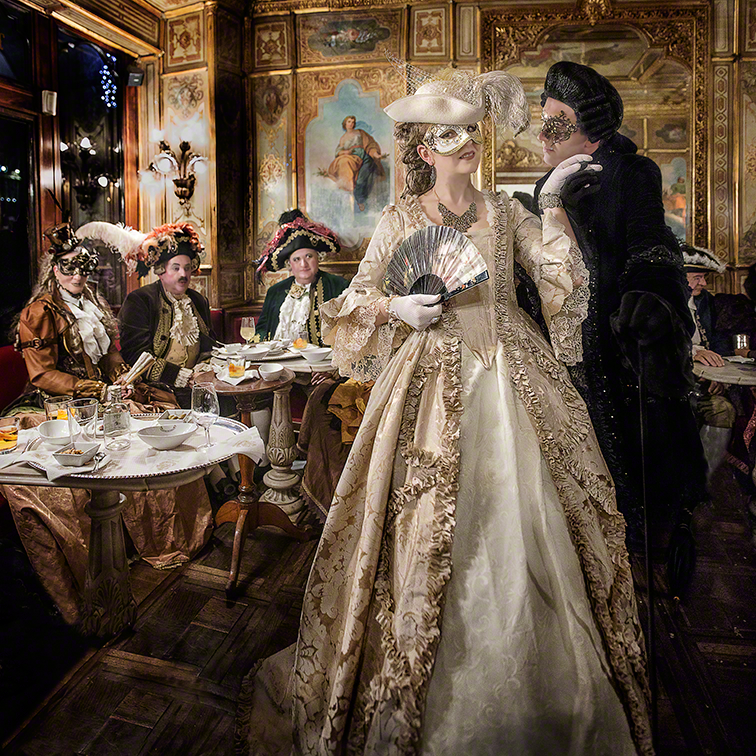
@MASSIMO DI CAPUA
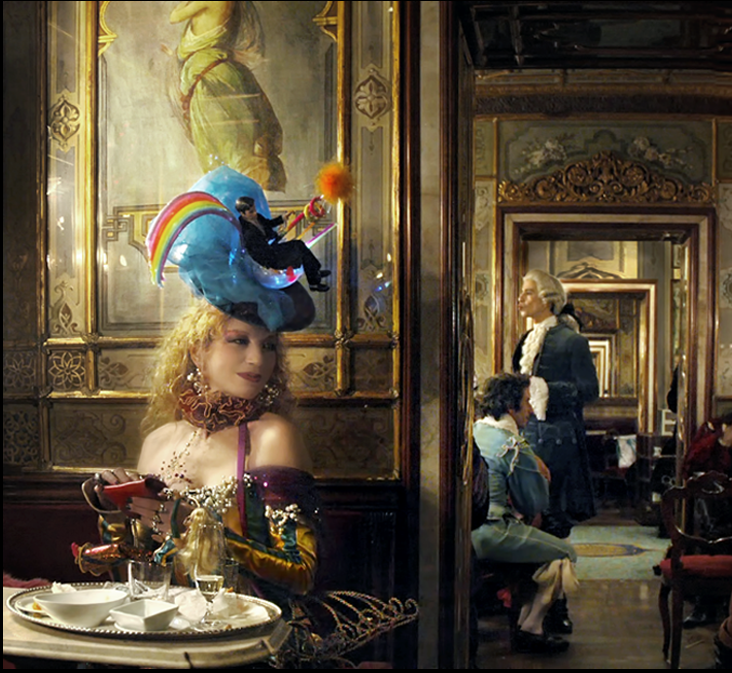
@MASSIMO DI CAPUA
The Carnival of Venice originated long ago: the word “Carnevale” first appeared in a 1094 document, while a decree issued in 1296 officially declared the Carnevale a public holiday.
At the time, and for much time thereafter, the Carnival lasted six weeks, from December 26 to Ash Wednesday: living without rules was an opportunity to escape convention and allow oneself a moment of liberation and fun. Nowadays, the Carnival period is much shorter, but still, its days are dedicated to celebration and partying: both Venetians and foreigners gathered in Venice to have fun with music and dance.
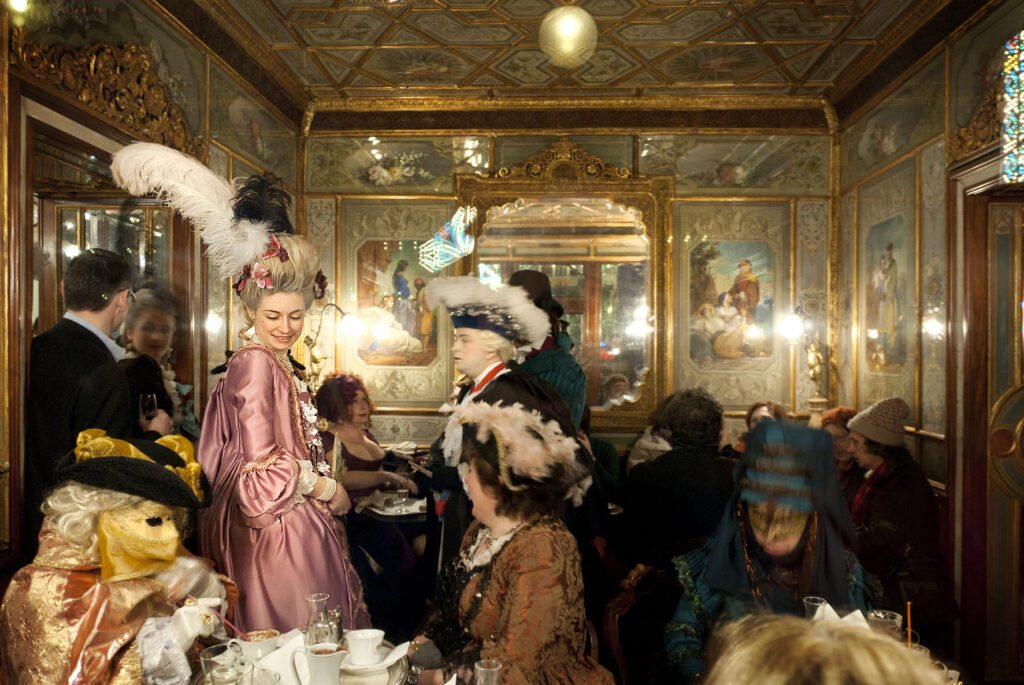
Caffè Florian is the essence of the Carnival: masks and costumes represent an important artistic and creative expression and the Caffè itself becomes every year an ideal, totally authentic set, where the fiction of masks comes to life. The Caffè is, once again, the image of Venice in Triumph, where a thousand languages tell the story of a unique stage where amazement and wonder know no limits. To live the experience of the Carnival of Venice at Florian, itself a piece of history more than three hundred years old, means being a protagonist of a celebration of fun and decadence. A place of delight where you can taste every bit of licentious happiness.

5. The Florian has expanded in Asia. Is there a specific tie to the region that dates back to the Marco Polo’s journey to Asia?
The core business of the Company is its location in Venice but, maintaining all its values in terms of glamour and quality, it has recently expanded its presence with the openings of new Florian Coffee Houses in Taipei and Taichung at Shin Kong Mitsukoshi. The new Florian’s are a contemporary interpretation of the famous 18th century coffee house, featuring the pastel interiors inspired by the original 18th and 19th century frescoes, stuccoes, mosaics, and Italian velvets, but in a decidedly modern key.
Asia is a fascinating market, at times complicated, but full of possibilities: Marco Polo was right! We found a partner interested in bringing not only the Florian’s world (timeless style, for the silver trays ’service, waitstaff’s unmistakable livery), but also the Venetian and Italian quality, style and culture to Asia and we started this adventure.
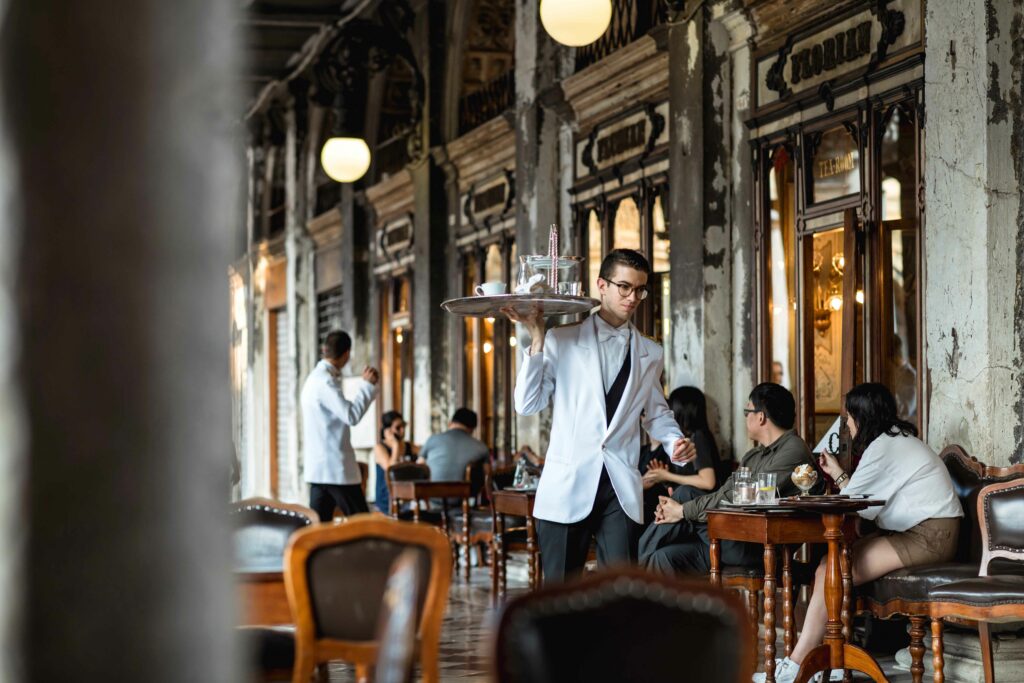
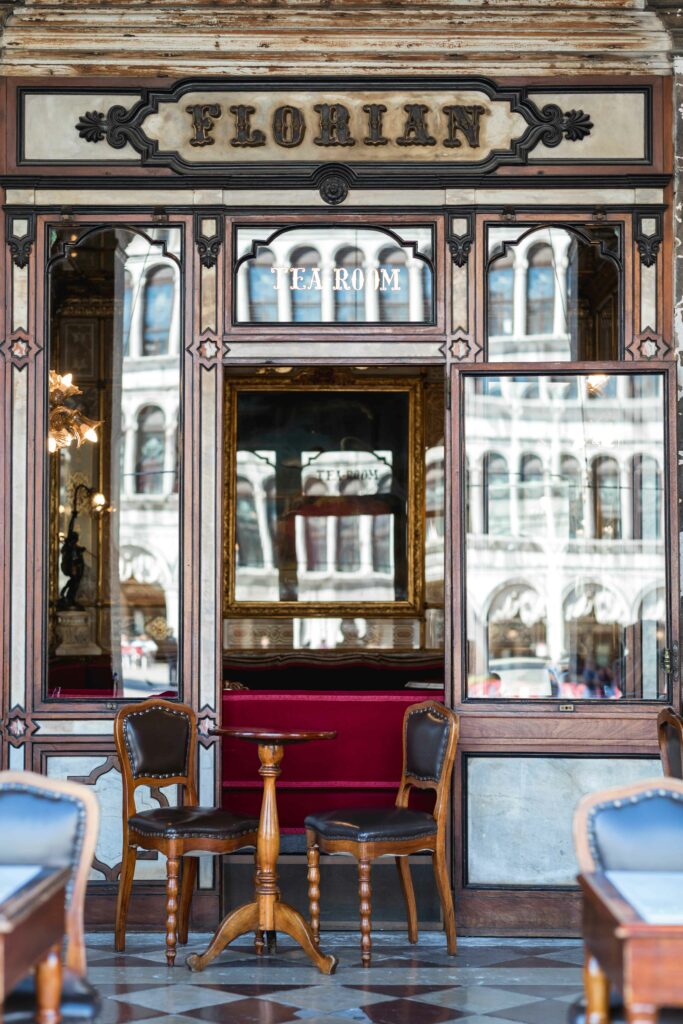
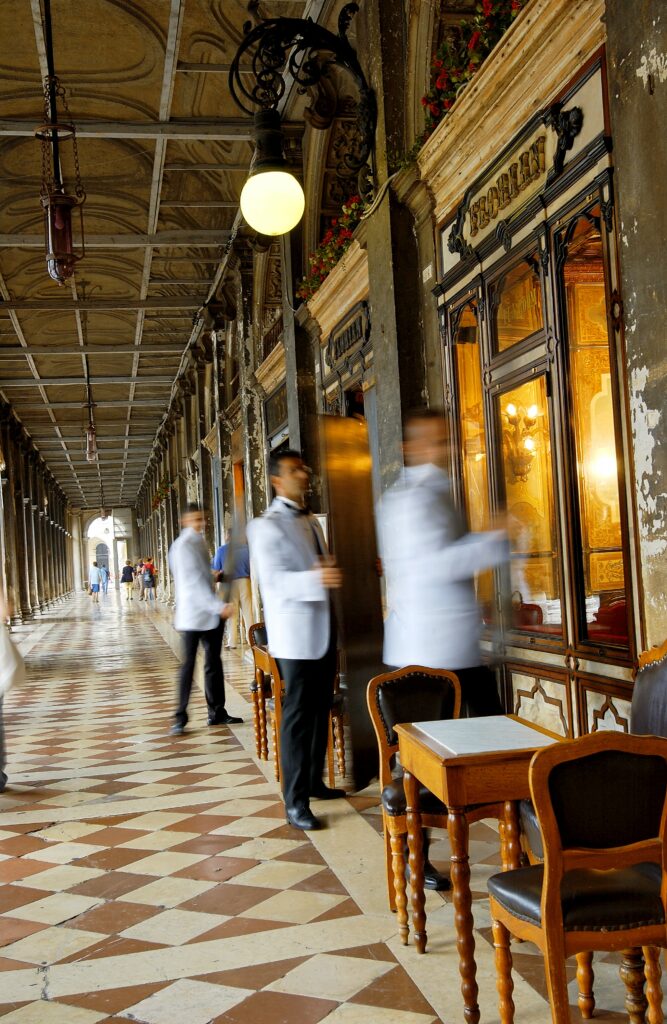
6. There are a number of products the Florian sells. Describe the Florian products? Any other plans to expand?
Quality, elegance, and refined Italian style are the essence of Florian-branded merchandise.
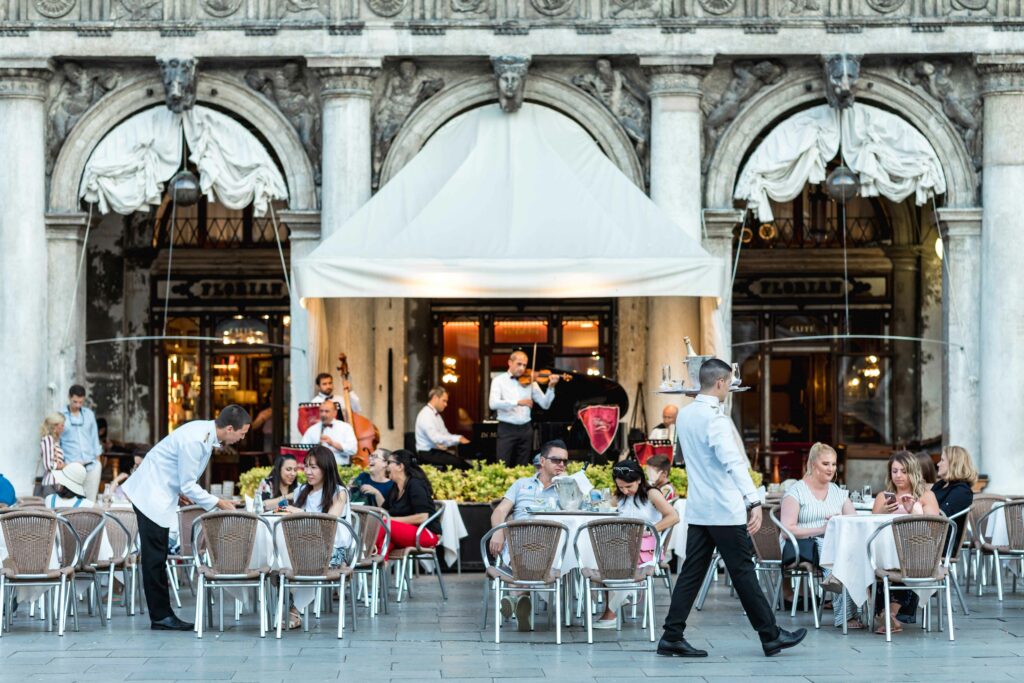
Research for high-quality raw materials and special attention to packaging are two distinguishing marks of the Florian’s Collections: the delicacy of the Gourmet specialties (coffees, chocolates, teas, biscuits, jams), the elegance of the Lifestyle line (porcelains, fashion accessories, fragrances, books) and the uniqueness of the Design objects, exclusively created in limited editions by internationally renowned artists. Every item is conceived to live the excitement of a special Florian’s experience at home, recreating the authentic Italian art of living.
Caffé Florian –
www.caffeflorian.com
Florian is a worldwide Brand. Find us in
VENEZIA | ROMA | TAIPEI | TAICHUNG
